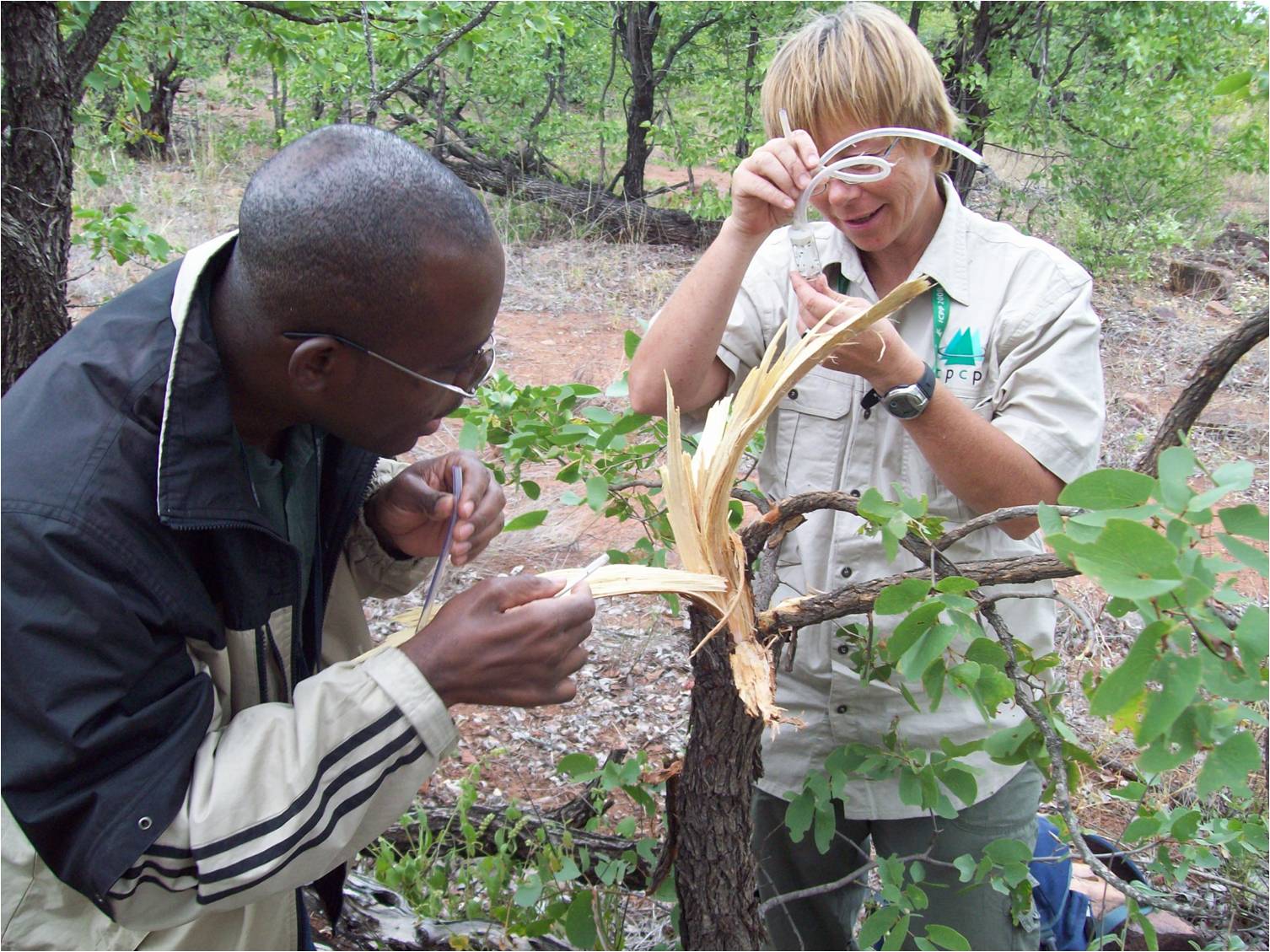Numerous CPHB projects aim to improve our understanding regarding the biology and ecology of the microbes and insects associated with agricultural plants and native woody hosts in South Africa.
Some of the microbes that are targeted belong to species in the Botryosphaeriaceae, Cryphonectriaceae and Uredinales (Ravenelia, Puccinia and Uromyces), as well as the genera Armillaria, Ganoderma, Fusarium, Mycosphaerella, Phellinus, Ceratocystis, Gondwanamyces, Coniothyrium (Colletogloeopsis / Phaeophleospora / Kirramyces), Cylindrocladium, Dothistroma, Pantoea, Ophiostoma, Candidatus Liberibacter africanus and Phytophthora.
The insects currently receiving most attention include bark beetles, bruchid beetles, as well as Coryphodema tristis and a number of species that could possibly be used in biocontrol programmes.
Various CPHB projects also consider the ecology and population biology of specific tree species to evaluate the effect that human practices (e.g. timber harvesting, coppicing, bark stripping, etc.) might have on the target plant, ecosystems and the conservation of natural habitats. Many further focus on the possible impacts that soil properties, nutrients, rhizobial symbioses and climatic factors might have on the invasiveness of certain species in diverse landscapes. A small number of projects also aim to investigate the effects that drought, frost and fire might have on the sustainable usage of indigenous woody resources.


